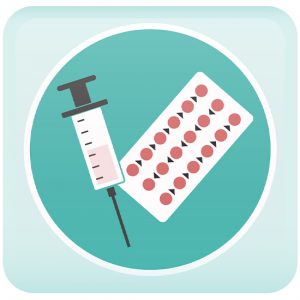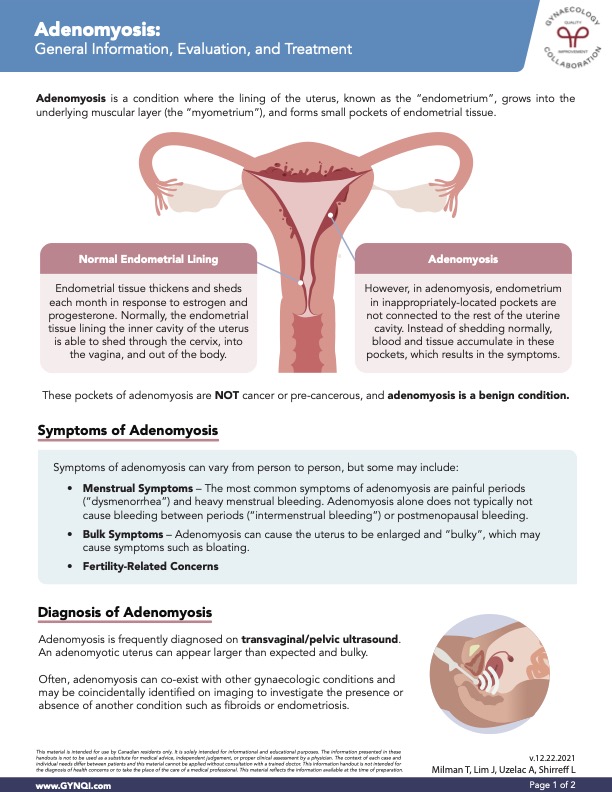
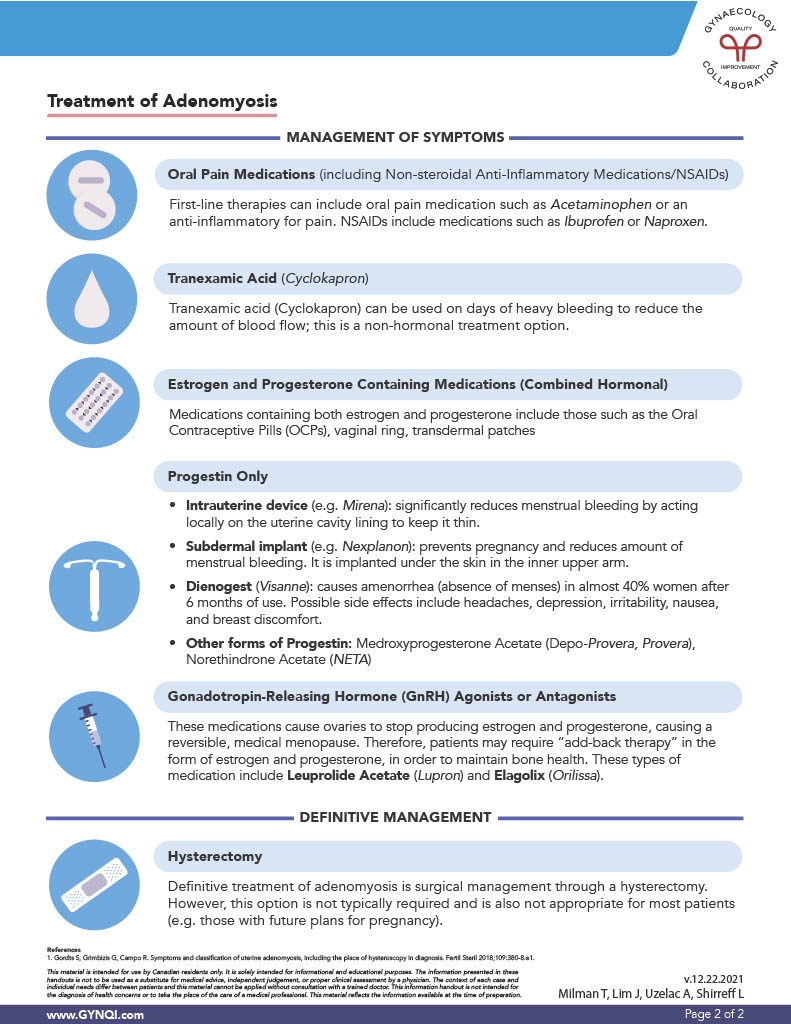
Table of Contents
- Summary
- What is Adenomyosis?
- Normal Endometrial Lining
- Adenomyosis
- Symptoms of Adenomyosis
- Diagnosis of Adenomyosis
- Managing Symptoms of Adenomyosis
- Oral Pain Medications
- Tranexamic Acid (Cyclokapron)
- Estrogen and Progesterone Combination Medications (Combined Hormonal Therapy)
- Progestin-Only Treatments
- Gonadotropin-Releasing Hormone (GnRH) Agonists or Antagonists
- Definitive Treatment of Adenomyosis
- Understanding Symptoms and Treatment Approaches
- Frequently Asked Questions
Summary:
- Adenomyosis is a benign condition characterized by the growth of endometrial tissue into the myometrium, leading to the formation of small pockets of tissue within the uterine muscle.
- Common symptoms include painful periods (dysmenorrhea), heavy menstrual bleeding, and an enlarged or “bulky” uterus, which can result in bloating.
- Adenomyosis is often diagnosed through transvaginal or pelvic ultrasound, where the uterus may appear larger than normal. It frequently coexists with other gynecological conditions.
- Treatment options range from pain relievers and hormonal therapies to surgical options like hysterectomy. A personalized management plan should be developed in consultation with a healthcare provider to address symptoms and individual lifestyle needs.
Adenomyosis is a benign condition where the endometrial tissue, which normally lines the uterus, grows into the myometrium, the underlying muscular layer. This abnormal growth forms small pockets of tissue that disrupt the normal shedding process during menstruation. As a result, those with adenomyosis may experience symptoms such as painful periods and heavy menstrual bleeding.
While adenomyosis is not cancerous, it can significantly impact your quality of life and fertility, requiring tailored management strategies to address individual needs.
What is Adenomyosis?
Adenomyosis is a condition in which the uterine lining, called the endometrium, grows into the underlying muscular layer known as the myometrium, creating small pockets of endometrial tissue.

Normal Endometrial Lining
Endometrial tissue thickens and sheds each month in response to estrogen and progesterone. Typically, the endometrial lining of the uterus is able to shed through the cervix into the vagina and out of the body.
Adenomyosis
In adenomyosis, the endometrial tissue is found in improperly located pockets that are not connected to the uterine cavity. Instead of shedding normally, blood and tissue accumulate in these pockets, leading to associated symptoms.
These pockets of adenomyosis are not cancer or pre-cancerous, and adenomyosis itself is a benign condition.
Symptoms of Adenomyosis
Symptoms of adenomyosis can vary from person to person, but some may include:
- Menstrual Symptoms: The most common symptoms of adenomyosis include painful periods (dysmenorrhea) and heavy menstrual bleeding. Typically, adenomyosis does not cause intermenstrual bleeding (bleeding between periods) or postmenopausal bleeding.
- Bulk Symptoms: Adenomyosis can lead to an enlarged, “bulky” uterus, which may result in symptoms like bloating.
- Fertility-Related Concerns: Studies show that adenomyosis negatively affects in-vitro fertilization.
Diagnosis of Adenomyosis
Adenomyosis is often diagnosed through transvaginal or pelvic ultrasound, where the affected uterus may appear larger and bulkier than normal. It frequently coexists with other gynecological conditions and may be incidentally discovered during imaging intended to evaluate other issues, such as fibroids or endometriosis.
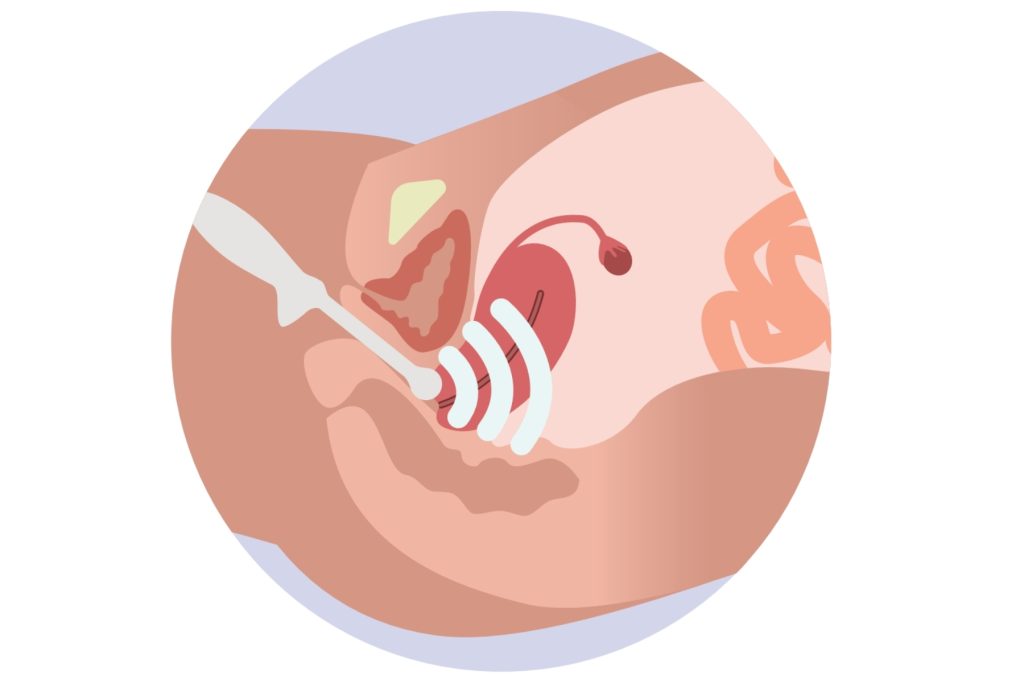
Managing Symptoms of Adenomyosis
Managing symptoms of adenomyosis can be done through a variety of treatments. Each treatment option has its benefits and risks, so it’s crucial for individuals to work closely with their healthcare provider to develop a personalized management plan that addresses their symptoms and lifestyle.
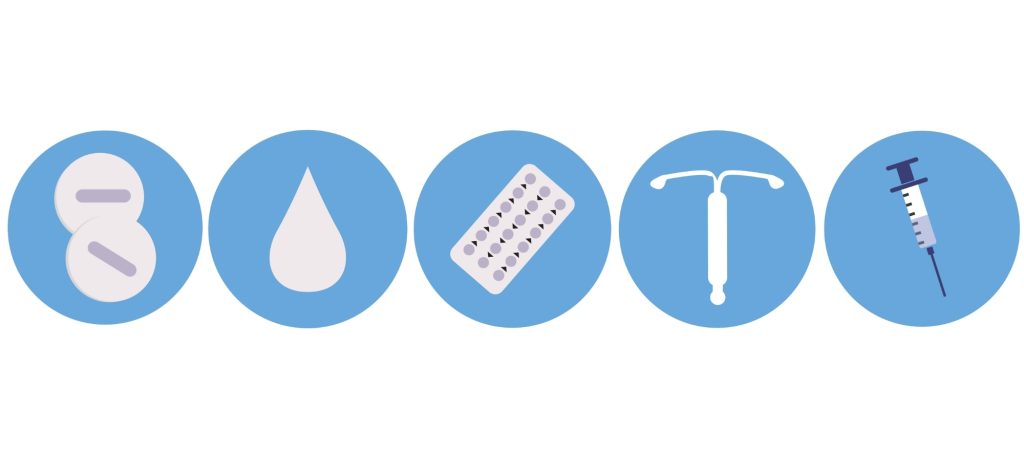
Oral Pain Medications
First-line treatments for managing adenomyosis symptoms may include oral pain relievers, such as acetaminophen, and anti-inflammatory medications. Non-steroidal anti-inflammatory drugs (NSAIDs) like ibuprofen and naproxen can also be effective in alleviating pain.
Tranexamic Acid (Cyclokapron)
Tranexamic acid (Cyclokapron) is a non-hormonal treatment option that can be taken on days of heavy bleeding to help reduce blood flow.
Estrogen and Progesterone Combination Medications (Combined Hormonal Therapy)
Medications containing both estrogen and progesterone include those such as oral contraceptive pills (OCPs), vaginal rings, and transdermal patches.
Progestin-Only Treatments
Progestin-only treatments are designed to manage adenomyosis by providing hormonal support while minimizing the risks associated with estrogen use.
- Intrauterine device (e.g. Mirena): Significantly reduces menstrual bleeding by acting locally on the uterine cavity lining to keep it thin.
- Subdermal implant (e.g. Nexplanon): Prevents pregnancy and reduces the amount of menstrual bleeding. It is implanted under the skin in the inner upper arm.
- Dienogest (Visanne): This oral progestin induces amenorrhea (the absence of menstruation) in nearly 40% of women after six months of use. Potential side effects may include headaches, depression, irritability, nausea, and breast discomfort.
- Other forms of Progestin: Medroxyprogesterone Acetate (Depo-Provera, Provera), Norethindrone Acetate (NETA).
Gonadotropin-Releasing Hormone (GnRH) Agonists or Antagonists
These medications suppress ovarian production of estrogen and progesterone, leading to a reversible medical menopause. To maintain bone health, patients may need “add-back therapy” with estrogen and progesterone.
Examples of such medications include Leuprolide Acetate (Lupron) and Elagolix (Orilissa).
Definitive Treatment of Adenomyosis
The definitive treatment for adenomyosis is surgical management via hysterectomy. However, this option is generally not necessary and is not suitable for most patients, especially those who plan to become pregnant in the future.
Understanding Symptoms and Treatment Approaches
Adenomyosis is a benign condition where the endometrial lining grows into the uterine muscle, leading to symptoms such as painful and heavy menstrual bleeding. Treatment options include pain relief, hormonal therapies, and non-hormonal medications, and surgery is usually unnecessary, especially for those wishing to conceive.
Working closely with your healthcare provider is crucial for developing a personalized management plan.
Frequently Asked Questions About Adenomyosis
How are adenomyosis and endometriosis different?
Adenomyosis and endometriosis are often confused, but they’re distinct gynecological conditions. In adenomyosis, the uterine lining grows into the muscular wall of the uterus, causing the uterus to become enlarged and painful. In endometriosis, tissue grows outside of the uterus, often on other organs like the ovaries or fallopian tubes.
Both conditions can cause heavy periods and pain, but the precise location of the tissue and treatment options are very different. It’s also possible to have both adenomyosis and endometriosis at the same.
How can adenomyosis affect fertility and pregnancy?
Changes to the uterus from adenomyosis can sometimes affect implantation or early pregnancy, making it harder to get pregnant or carry a pregnancy to term. People with adenomyosis can often still conceive with the right support, so if you’re trying to get pregnant, let your doctor know right away. Fertility treatments and medications may help.
Can adenomyosis be managed without surgery?
Yes! People who want to avoid surgery have several options available to manage their symptoms.
- Hormone therapies like progestin-only birth control
- Intrauterine devices (IUDs)
- Gonadotropin-releasing hormone (GnRH) agonists
All of these treatments can help control heavy bleeding and reduce your pain. Anti-inflammatory medications, such as NSAIDs, may also provide relief from adenomyosis.
How does MRI help diagnose adenomyosis?
MRI is considered one of the most accurate tools for diagnosing adenomyosis. Unlike ultrasound, an MRI provides a more detailed view of the uterine muscle and can help your provider identify the signs of adenomyosis, like a thickened uterine wall or dark spots in the muscle. This can help differentiate adenomyosis from other conditions, like fibroids or endometriosis.
Can lifestyle changes help me manage adenomyosis?
Yes! While adenomyosis often requires medical treatment, certain lifestyle changes may help reduce your symptoms.
- Getting enough exercise
- Eating anti-inflammatory foods, like leafy greens, fatty fish, and nuts
- Managing your stress with yoga, mindfulness, and other strategies
Tracking your symptoms can also be helpful because it can make it easier for your doctor to tailor your treatment plan over time.

